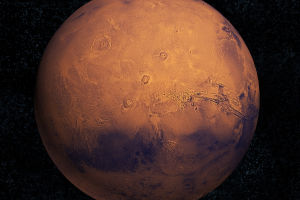Fifty years after the moon landing, NASA began to develop a new generation of heavy rockets and "Orion" spacecraft, and plans to send astronauts to the surface of the moon again by 2024.
So some people have raised the question, why not directly use the design of the Apollo 11 to go to the moon again?
What is the similarity of this new plan "Artemis"?
Landing on the South Pole of the Moon
Unlike Apollo 11, which landed on the front of the Moon in the Sea of Tranquility, the landing site for Artemis was chosen at the South Pole of the Moon.
An important reason for choosing to land at the South Pole of the Moon is that recent studies have shown that the Moon's poles may store more than 450 million tons of water ice.
If a base is established at the poles, the drinking water problem can be solved.
This water could also be used to make liquid oxygen and liquid hydrogen, which could provide fuel for deeper space exploration.
Bigger challenges
"The Apollo 11 landing site was in a flat area near the lunar equator, and the return capsule needed little propulsion to return to lunar orbit to dock with the orbiting spacecraft.
The process involved in the Artemis program is much more complex, starting with the establishment of a staging area in lunar orbit called a "portal" where the astronauts arrive and then travel to and from the lunar south pole in a landing module.
This system is complex, but it has its advantages.
The rocket in the new plan only needs to deliver the spacecraft to the "portal".
So there is no need to use a "big guy" like the Saturn V in the Apollo missions, which can save fuel and also More payloads can be delivered.
The astronauts could make multiple trips between the Gateway and the lunar surface, helping to establish a lunar base.
Three parts of the lunar landing program
To achieve this set of lunar landings with multiple trips to the Moon, the Artemis program consists of three parts: the construction of the Gateway, the construction of rockets and spacecraft to the Gateway, and the construction of a trip between the Gateway and the Moon.
The construction of a landing module to travel between the Gateway and the Moon.
Building a lunar base
The astronauts in the Artemis program will initially spend seven days at the Moon's south pole, and as the Gateway expands and surface facilities are added, surface exploration is expected to extend to weeks or months, which means building a base on the Moon.
The Moon is not the end
NASA has made it clear that one purpose of establishing a base at the Moon's south pole is to prepare for a Mars landing in the 1930s, although there is no particularly clear plan for a Mars mission.
The Moon will be a testing ground for Mars, and the ability to live on the Moon for longer periods of time is necessary before a years-long journey to Mars can be completed.
Learning to use the resources in space to resupply themselves and manufacture products is a prerequisite for achieving deep space exploration.


